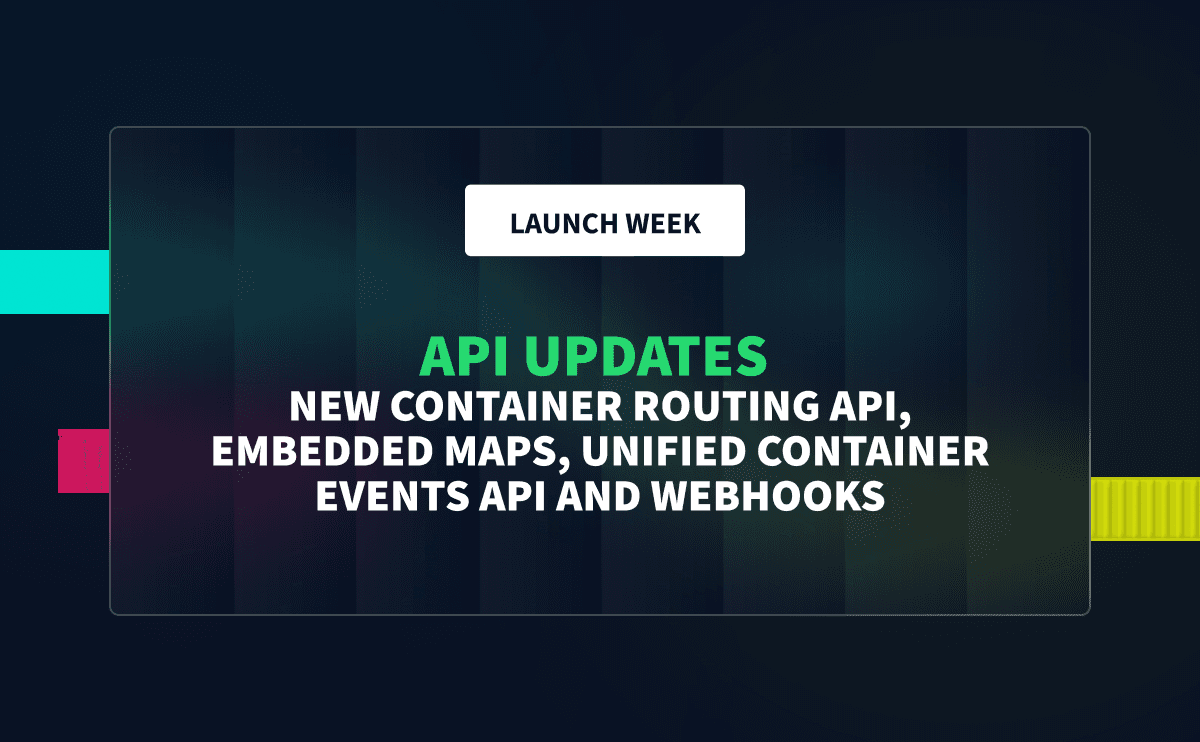In this post, we explore the world of container tracking logistics through an analysis of Evergreen Shipping Line's (EGLV) 2023 shipping data. We'll examine monthly trends, lane performance, where time is spent in the shipping process, and how global events affected shipping times.
Monthly Trends in Shipping Times
We start by examining how EGLV's shipping times changed each month in 2023. We'll show you a chart illustrating the variations from January to November, highlighting both efficient periods and potential delays.

Lane Performance: Identifying the Best and Worst
We take a closer look at specific shipping lanes to identify those with the fastest and slowest transit times. This information can provide insights into operational efficiency and areas that might need improvement.

Component Analysis: Breaking Down Transit Times
To get a clearer picture of the shipping process, we break down transit times into three components: origin, shipping, and destination. Most of the time is spent in transit, which suggests that improving this aspect could enhance overall efficiency.

Identifying Inefficiencies
We also identify lanes where transit times at the origin or destination are longer than average, pointing to potential inefficiencies in those areas.
The top 4 lanes with the longest transit times are:
Globally
- Port Klang - Westport (MYWSP) - San Juan (PRSJU): 111.5 days
- Nhava Sheva (INNSA) -San Juan (PRSJU): 113.5 days
- Penang (MYPEN) - San Juan (PRSJU): 103.5 days
- Jakarta, Java (IDJKT) - San Juan (PRSJU): 99.5 days
Eastern U.S.
- Jakarta, Java (IDJKT) - Miami Seaport (USMIA): 108.2 days
- Nhava Sheva (INNSA) - Tampa (USTPA): 102 days
- Semarang (IDSRG) - Miami Seaport (USMIA): 101 days
- Tanjung Pelepas (MYTPP) - Miami Seaport (USMIA): 100 days
Western U.S.
- Chennai (INMAA) - Oakland (USOAK): 89.6 days
- Mundra (INMUN) - Seattle (USSEA): 85.5 days
- Mundra (INMUN) - Tacoma (USTIW): 75.3 days
- Mundra (INMUN) - Oakland (USOAK): 66.7 days
The top lanes with the shortest transit times into the US are:
Globally
- Qingdao (CNQDG) - Hong Kong (HKHKG): 10 days
- Colon (PAONX) - New York / New Jersey (USNYC): 15.5 days
- Cartagena (COCTG) - New York / New Jersey (USNYC): 16.3 days
- Colon (PAONX) - San Juan (PRSJU): 17 days
Eastern U.S.
- Colon (PAONX) - New York / New Jersey (USNYC): 15.5 days
- Cartagena (COCTG) - New York / New Jersey (USNYC): 16.3 days
- Le Havre (FRLEH) - New York / New Jersey (USNYC): 19.6 days
- Le Havre (FRLEH) - Virginia (USORF): 22.6 days
Western U.S.
- Shanghai (CNSHG) - Long Beach (USLGB): 24 days
- Hong Kong (HKHKG) - Los Angeles (USLAX): 24 days
- Songshu (CNSGS) - Long Beach (USLGB): 24.6 days
- Tokyo (JPTYO) - Los Angeles (USLAX): 24.7 days
Impact of Global Events on Shipping
We consider how global events affected shipping times in 2023. Chinese New Year, for example, likely influenced January's transit times. Although we can't visualize Christmas due to data limitations, it's another significant event that traditionally affects shipping. In addition to impactful holiday seasons, anticipating and responding to major global crises and weather events are becoming a more and more of a reality.
Evergreen line declares force majeure on Israel shipment -customer note
Evergreen Marine chairman Chang: No thrid-quarter peak this year - Container News
Market too pessimistic, says Evergreen boss, demand will bounce back - The Loadstar
Our analysis of EGLV's 2023 shipping data reveals the intricacies of maritime logistics and opportunities for improved efficiency. As global events continue to shape the shipping industry, data-driven insights will be essential for successful navigation.
About the Data The data used for this analysis comes from Terminal49 and covers various shipping lanes and transit times for EGLV in 2023.





